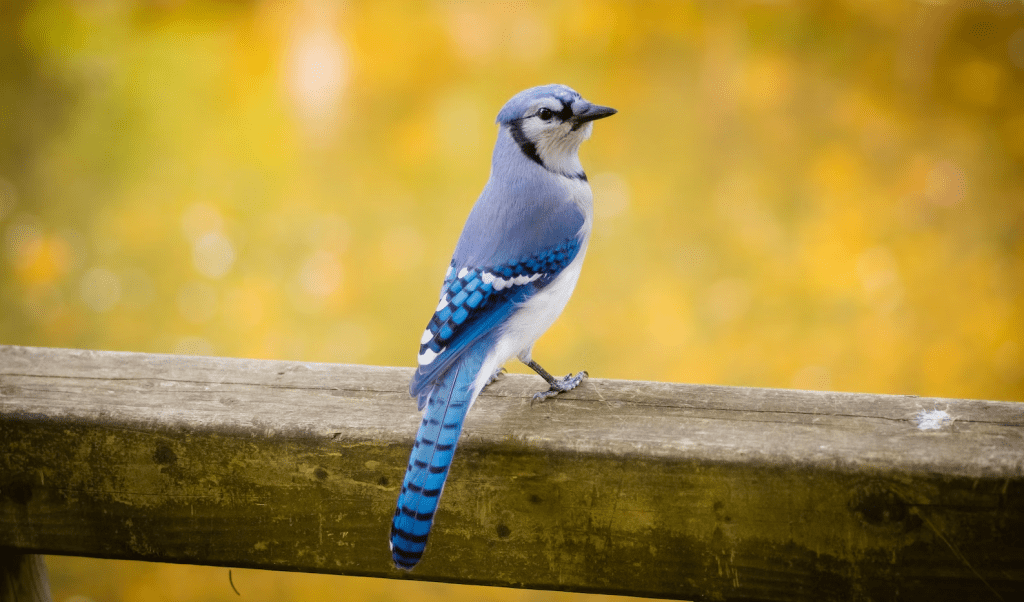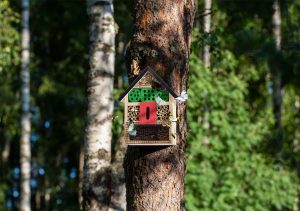9 Fun Facts about Blue Jays You Never Miss
Blue Jays are a frequent sight in suburban and rural backyards across the majority of North America. These birds are magnificent, and they chirp in multiple voices. They are a very intriguing kind of bird, both in terms of the way they utilize their voices and the level of intelligence they possess. Listed below are some of the more noteworthy fun facts about Blue Jays:
1. Blue Jays always nest in evergreen trees
Blue jays choose evergreen trees for their nesting sites. They construct their cup-shaped nests using branches, moss, bark, fabric, and feathers. Blue Jays build a nest for their offspring in pairs, with the male and female working cooperatively. The male will nourish and care for her while she is protecting the eggs. Upon reaching the age of 18 to 21 days, the entire Blue Jay family will abandon the nest at once.

@sheilacsnature
2. Blue Jays are picky eaters
They will keep searching among the seeds in backyard feeders until they find what they’re looking for. To determine the weight of the seed, they’ll use their bill to pick it up. For comparison, they will take up another seed to test whether it is heavier. They won’t bother to eat or store seeds that have gone rotten or are otherwise unappetizing. But remember, they love acorn seeds.

3. Blue Jays’ feathers lack any pigment
Blue Jays look blue, but their feathers do not contain any blue pigments at all. The blue color in Blue Jay’s feather is not caused by melanin; instead, it is due to refraction. That’s why no matter how long a Blue Jay feather has been exposed to the sun’s rays, its color will never fade.
4. Blue Jays warn other birds (serve as an alarm system for other birds)
These bright birds have a habit of chatting a lot. They can produce a variety of tones, from sweet morning chirps to obnoxiously loud squawks. The Red-shouldered Hawk is one of Blue Jay’s primary predators. When they spot a hawk, they mimic its swooping motions to alert other birds of its location.

5. Blue Jays’ migration is a mystery
It’s not uncommon for blue jays to migrate great distances, yet their migratory routes remain a mystery. Their travel plans vary from year to year. However, when they migrate, they do it in flocks of up to 200-250 birds at a time.
6. Blue Jays are smart birds
This bird is a genius. Some Blue Jays in human captivity use tools to collect their food or to open the cage door. They are also known to wait patiently for humans to finish their meals before swooping in to pick up the scraps left behind.

7. Blue Jays are monogamous
Blue jays have a long-term partner. They are monogamous and seldom change their partner. The male provides the female with food while she nurtures the eggs in their stick nest. Typically, she will lay anything from two to seven brown or blue eggs. The incubation period lasts between 17 and 18 days.
8. Female Blue Jays have naked patches on their bellies
The female Blue Jays, much like the other songbirds, will grow a naked patch of skin on their bellies, which is referred to as the brood or incubating patch. There are no feathers in this region; instead, it is loaded with tiny blood veins. It does, in fact, supply heat to the eggs while they are being incubated, as well as to the baby blue jays later on.
9. Blue Jays are known to prey on baby birds
Because they are omnivores, blue jays will invade the nests of other bird species and consume their eggs and young. They have been shown to be one of the most common culprits in the predation of songbird nests. Due to this behavior, In comparison to hawks, they destroy significantly more eggs than hawks.
During the breeding season, they feed on the eggs and chicks of other birds as a convenient and nutrient-dense food source. It will be a large feast rather than a bunch of tiny seeds.
Conclusion
Blue Jays are one of the wonderful avian creatures. They are mostly present in North America. But they also migrate to other places too.
To attract blue jays to your backyard, you can hang a bird feeder with a lot of room for them to sit. Usually, platform feeders serve this purpose well. Blue Jays will eat many types of food/seed, but they really like acorns! Furthermore, we hope you like our all above mentioned fun facts about Blue Jays!

@Charles Schmidt

@candaceleephotography

@ExceptionalEyePhotos
Have you noticed that the same bird can have diametrically opposite meanings in different countries? We picked some typical birds meaning differences for you here!
Subscribe for more info>>













Post Comment